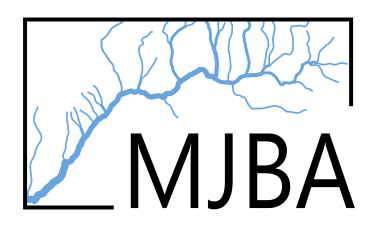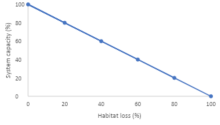Habitat Loss and Plains Sucker System Capacity
mbakken
View all records in the stressor response library
Species Common Name
Plains Sucker
Latin Name (Genus species)
Pantosteus jordani
Stressor Name
Habitat loss
Specific Stressor Metric
Total habitat loss
Stressor Units
% lost
Vital Rate (Process)
Survival
Geography
Saskatchewan
Detailed SR Function Description
Habitat loss is defined as a proportion of the total habitat that has been lost (relative to pristine or historical conditions). Habitat loss could also be the amount of habitat that has been converted to non-suitable habitat.
Function Derivation
Expert opinion
Transferability of Function
This stressor-response function is suitable for use on Plains Sucker populations in the Saskatchewan-Nelson and Missouri River drainages in Southern Alberta and Saskatchewan. It may be reasonable to assume the SR function can be applied to Cordilleran Sucker, given the similarity of their physical characteristics (prior to 2023 both species were classified under a single species, Mountain Sucker); however, there is no data to confirm this assumption. Therefore, more data is required and caution should be taken when using this function on other species.
Source of stressor Data
Practical application of the SR function necessitates that users obtain estimates of stressor magnitude (level) in the target system. We don’t currently have data on habitat loss or biomass density data to compare pre- and post- habitat destruction.
Function Type
continuous
Stressor Scale
linear
References Cited
Jarvis, L. 2022. Habitat loss stressor-response function for Plains Sucker. Department of Fisheries and Oceans CEMPRA model for Plains Sucker.
File Upload
Stressor Response csv data
Data_PLSU_habitatLoss.csv
(149 bytes)
| Habitat Loss | Mean System Capacity (%) | SD | low.limit | up.limit |
|---|---|---|---|---|
| 0 | 100 | 0 | 0 | 100 |
| 20 | 80 | 0 | 0 | 100 |
| 40 | 60 | 0 | 0 | 100 |
| 60 | 40 | 0 | 0 | 100 |
| 80 | 20 | 0 | 0 | 100 |
| 100 | 0 | 0 | 0 | 100 |
Stressor Response Chart

